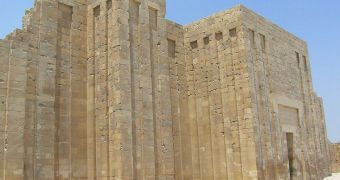A team of Egyptian archaeologists has recently discovered a new burial chamber in an area located near a known pyramid, and the experts say that this could be the first tomb of an unknown necropolis.
The word means “city of the dead” in Greek, and several such sites have been discovered in the country, including the ones at Theba, Saqqara and Memphis.
The new tomb was discovered a short distance south of a necropolis containing the remains of pyramid builders, and experts believe this is a sign that a new necropolis may soon be unveiled.
“This tomb could be the first of many in the area. Hopefully we have located a new necropolis dedicated to certain members of the royal court,” explains expert Zahi Hawass.
The official is the secretary general of the Supreme Council of Antiquities in Egypt, the organization that deals with coordinating digs for ancient pyramids, necropolises and other complexes.
According to the expert, it could be that the newly discovered room hints at a continuation of the western necropolis at Giza, which is renowned around the world for housing the three Great Pyramids.
They are however only the tip of the iceberg, as in the largest structures of their kind. The Council believes that the vast majority of Egyptian pyramids and other ancient structures were covered by the desert thousands of years ago.
Though the Giza pyramids are the most renowned feature of the necropolis, there are other mortuary complexes at that location.
According to initial analysis, the new tomb dates from the Fifth Dynasty period, which took place between 2465 and 2325 BCE. The monument was built to house the remains of priest Rudj-Ka.
Archaeologists revealed that the official was a purification priest for the pharaoh Khafre, which means that his was also in charge of his mortuary cult.
Inside the intricate tomb, experts discovered a series of wall carvings depicting the priest and his wife in front of offering tables, filled with cattle and bread loafs.
Additional scenes portrayed Rudj-Ka as he was engaged in daily activities, such as boating and fishing, the team that found the monument says.
The tomb was found during routine excavation, conducted by a team of Egyptian archaeologists from the Supreme Council of Antiquities, LiveScience reports.

 14 DAY TRIAL //
14 DAY TRIAL //